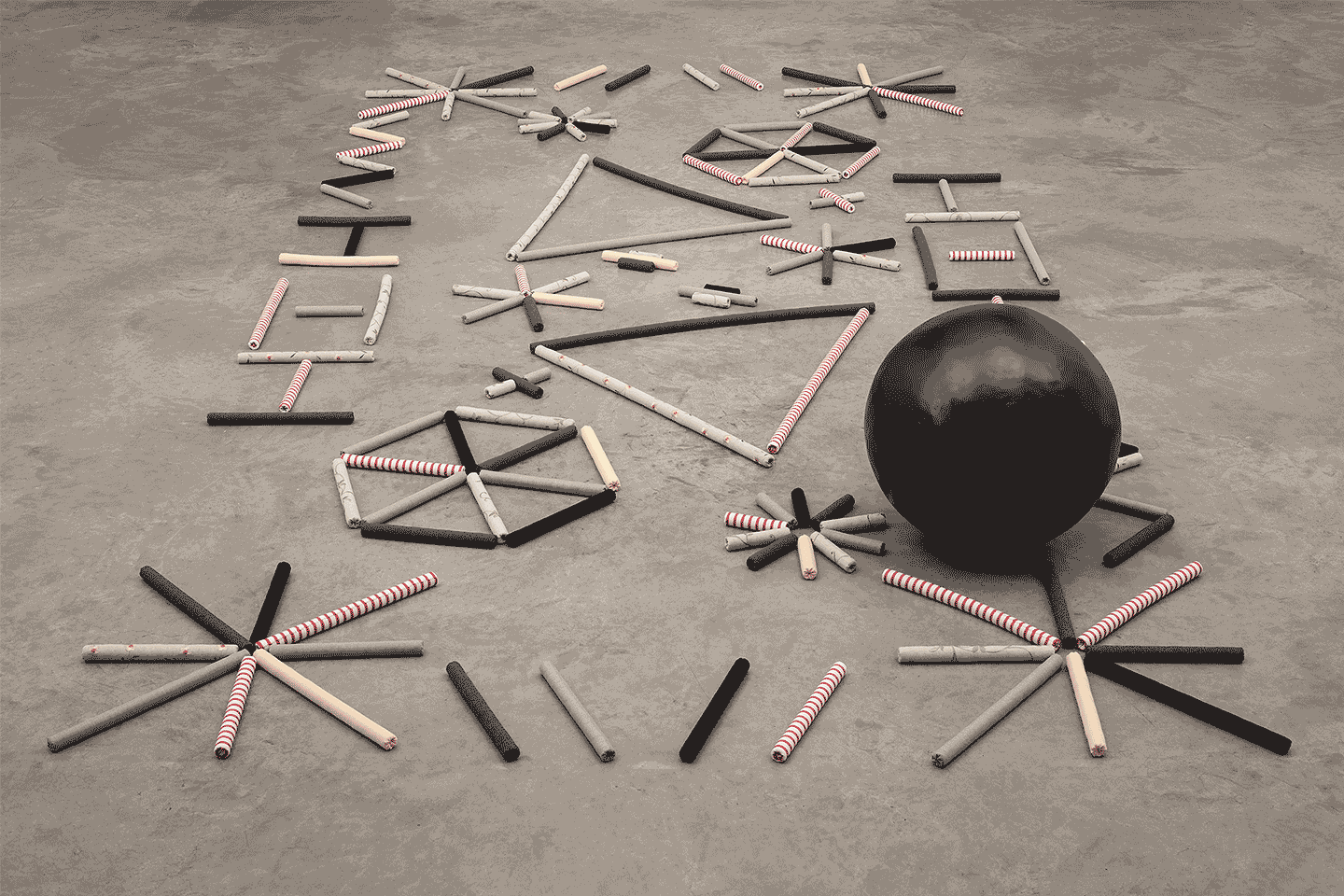March 10–June 9, 2017
Fink’s (Library of Tastes) is open March 10–20, 11am–6pm daily
Palais Trauttmansdorff
Burggasse 4
8010 Graz
Austria
Hours: Wednesday–Sunday 12–6pm
T +43 316 834141
office@grazerkunstverein.org
New and extended commissions: Céline Condorelli, Chris Evans with Morten Norbye Halvorsen, Fiona Hallinan
On display: Isabella Kohlhuber, Isabel Nolan, Adam Zagajewski
On reflection: Ernst Fischer, The Necessity of Art, 1959
In 1894, on more than one occasion, a resident of a psychiatric hospital in Heidelberg, Germany, tore up her bedclothes. The visible results of Marie Lieb’s strange actions were strips of fabric, cotton perhaps, of varying lengths, laid out in careful patterns on old floorboards and over parquet. By putting the torn textiles onto the floor, she made a carpet of sorts. But it is only the bones of a carpet, a pattern comprised of frayed strips of fabric interrupting a wooden floor. The doctors of the hospital saw her behaviour as evidence of mania. Subsequently her actions have been classified as artistic. It is no challenge to imagine motives that led to this act, reasons that may pertain to her past, present or future. Perhaps she was trying to communicate something particular, regardless of this, the gesture is not reducible to a single explanatory framework.
Lieb fashioned and repeated motifs; patterns made with various fabric lengths that formed occult islands of layered cotton. The ornamental, abstract configurations of lines, some short, some long, have been described as flowers, stars, wheels, and crosses. They also include geometric shapes—hexagons and triangles, and what seem to be single letters, perhaps even words.
There is something perverse about carpet that cannot be stood on, a rug that cannot be rolled up or beaten. It is disobliging of a rug to not be the perfect place for a drowsy dog in front of a fire, and it is a contrary rug that cannot be paced upon, or used to conceal a body. Odder still is carpeting that has no underlying grid and is endlessly re-configurable, a rug that lacks warp and weft. A rug that is skeletal and provisional is an awkward object.
Extract from “800 words: A Poster,” Isabel Nolan, 2012.
What good is a carpet you can’t walk across? A rug you can’t sit or stand upon? Inspired by the distinctive mark making of a woman at a psychiatric hospital in Heidelberg in 1894, Isabel Nolan’s work The Provisory Rug, adaptable for past, present and future. (For Marie Lieb), celebrates the disarming nature of a stubbornly partial object, one that demands attention, alters perception, and reaches for meaning beyond what is known. Nolan’s work accompanies the artistic programme of 2017 at the Grazer Kunstverein, alongside new commissions by Chris Evans with Morten Norbye Halvorsen, and Fiona Hallinan; an extended commission by Céline Condorelli; evolving presentations of work by Isabella Kohlhuber; and a poem by Adam Zagajewski.
Art has long been the dysfunctional holding space for thought. Objects identifiable for their potential use, thwarted. A familiar thing presenting itself as what it is, only to reveal that it isn’t. Throughout 2017 the Grazer Kunstverein is occupied with unraveling thoughts around tools and magic, use and necessity, work and power, as explored in The Necessity of Art, written in 1959 by the brilliant and almost forgotten Ernst Fischer.
Credited with the slogan “Art must do nothing, yet can do everything” Fisher acts as our spirit guide for the development of a year-long programme of new commissions, evolving conversations, and on-going research collaborations, all dedicated to or inspired by the question of the necessity of art. Less concerned with “art in the service of…” and more convinced by “art as the potential for…” the programme reflects a commitment to performativity through language, meaning and enactment. Each season builds, evolves and blends works, positions, and practices in an accumulative gesture that questions the role and function of a kunstverein in times of deep uncertainty about what art is, does, or can do. As Adam Zagajewski asks, why is art silent when terrible things happen? And terrible things happen every day.
Note: The sculpture The Provisory Rug, adaptable for past, present and future. (For Marie Lieb), was originally commissioned by Vaari Claffey for Gracelands: Circling the Square, as part of eva International, 2012.
Grazer Kunstverein is structurally supported by the city of Graz, the Federal Chancellery of Austria Arts and Culture Division, the province of Styria, Legero | con-tempus.eu, and its members. The presentation of work by Isabel Nolan and Fiona Hallinan is kindly supported by Culture Ireland.
Grazer Kunstverein is part of the CMRK network.


